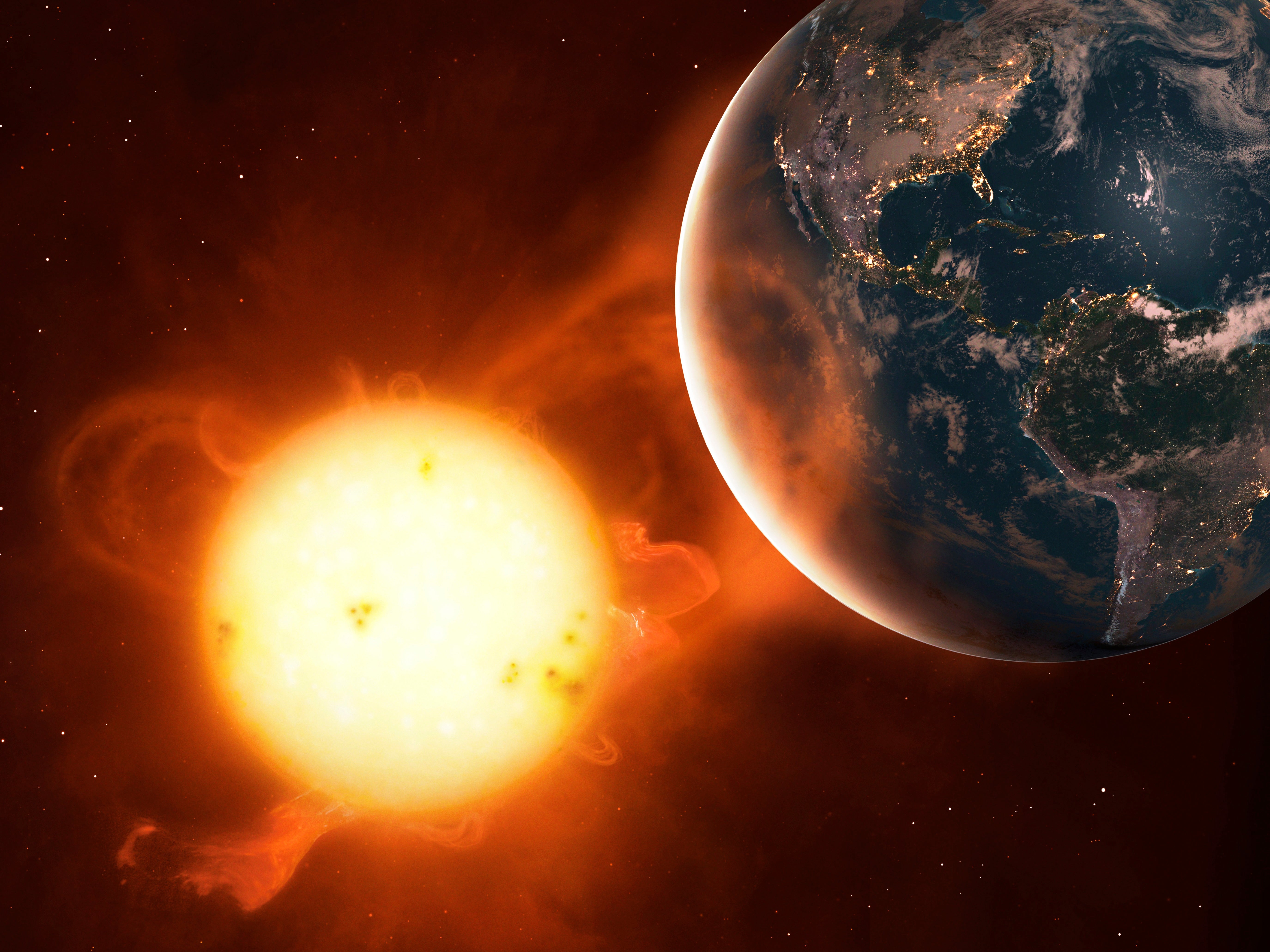
[ad_1]

Some 14,300 years ago, a pine forest in France bore witness to an event that has never been experienced in modern times: a bombardment of solar particles that was so fierce that it would likely knock out communications satellites and fry power grids across the globe if it were to happen today. “It would be a catastrophe,” says Edouard Bard, a climatologist at the Collège de France in Paris, who led a new study that discovered the ancient event.
Bard and his colleagues made their finding by analyzing tree rings in a buried forest, exposed at the edge of riverbeds in the French Alps. The signs they uncovered point to what’s called a “Miyake event,” named after Fusa Miyake, a physicist at Nagoya University in Japan, who first discovered traces of another such event in tree rings from C.E. 774. Because no one has witnessed a Miyake event in modern times, scientists aren’t certain of their cause, but researchers believe they represent bombardments of high-energy protons from the sun. Smaller versions of such events, known as solar energetic particle (SEP) events, have been observed in the modern era. They usually occur alongside a broader array of activity on the sun’s surface, including solar flares, which are bursts of electromagnetic radiation, and coronal mass ejections (CMEs), which are eruptions of magnetized plasma.
The newfound Miyake event is the largest of the 10 that are known so far; it’s about twice the size of the most recent C.E. 774 blast and an order of magnitude more powerful than the so-called Carrington Event of 1859. Though not a Miyake event, the Carrington Event was the most powerful solar storm that humans have experienced since the industrial revolution. Today a solar disruption like the Carrington Event or the much larger Miyake events would scramble satellite communications and induce currents in electrical equipment, causing power grids to melt down. Such a blast would likely grind modern life to a halt and cut off large numbers of people from power and communication, potentially for weeks. Systems that are dependent on GPS, including financial markets, would struggle to function.
It’s not easy to find evidence of past SEP events because there are few traces of them in easily dated material. But the events do leave signs in tree rings and ice cores: When charged particles from the sun enter the atmosphere, they interact with molecules to produce spikes in a radioactive carbon isotope called carbon 14. Because it decays at a known steady rate, this isotope is used to date organic materials. Trees with unusual spikes in carbon 14 can also indicate a Miyake event. And with another form of dating—say, counting tree rings—scientists can determine when that event occurred.
In the new study, published on October 9 in Philosophical Transactions of the Royal Society A, a buried forest enabled the analysis. At the end of the Last Glacial Maximum, when ice sheets that covered 25 percent of Earth’s land area began to melt, rushing rivers dumped sediment over a forest of Scotch pines (Pinus sylvestris). The submerged oxygen-free environment preserved the tree trunks, which still stand upright and rooted today. “Such discoveries are exceptional,” says study co-author Cécile Miramont, a dendrochronologist at Aix-Marseille University in France.
The researchers took carbon 14 samples from 172 of these trees found along the banks of the Drouzet River. They soon discovered a strange excess in radiocarbon dated to 14,300 years ago. To confirm the timing, Miramont and her colleagues looked at beryllium 10 (another marker of extreme solar activity) in Greenland ice cores. They found that both carbon 14 and beryllium 10 shot up at the same time. “[The sizes of] these spikes are completely unprecedented,” Bard says.
Miyake, who was not directly involved in the research, calls the discovery “very exciting” but also notes that it wasn’t surprising. Scientists have been looking for ancient SEP events for only about a decade, and the work is painstaking. There are likely many more hiding in the tree ring record, Miyake says.
If the results are confirmed, the find will be considered particularly interesting because the event seemed to have happened in one of the sun’s regular quiet periods, as opposed to near its “maximum” of activity, says Mark Miesch, a research scientist who studies space weather at the Cooperative Institute for Research in Environmental Sciences at the University of Colorado Boulder and the National Oceanic and Atmospheric Administration’s Space Weather Prediction Center. Miesch, who was not involved in the study, says that flares and CMEs typically happen when the sun is in an active period, with lots of sunspots at the surface. Our home star goes through periods called grand minima when there are few to no sunspots. If the Miyake event 14,300 years ago indeed happened during one of those periods, it would be somewhat unusual and very interesting, Miesch says. “It almost gives you the impression the sun is building up this magnetic field below the surface that it just needs to get out, and it hits some breaking point,” he says.
At the end of the last ice age, the Miyake event would likely have gone unnoticed, except perhaps as shockingly bright auroras that dipped much closer to the equator than normal. But such an event would be extremely apparent today, given human reliance on vulnerable technology, Miesch says. Researchers hope to find evidence of more events to better understand how often these huge solar particle eruptions occur. “It is probable that in the next few years, we will uncover new ones that may be able to extend back in time,” Bard says. “But we need to be lucky.”
[ad_2]